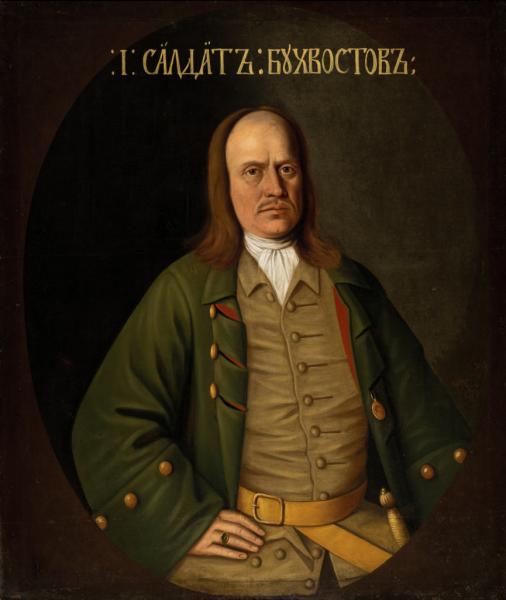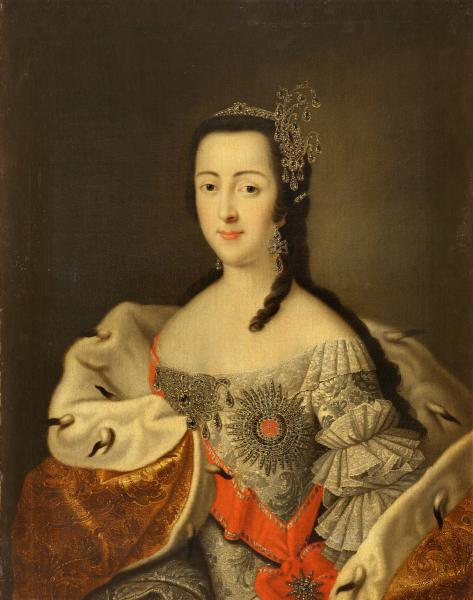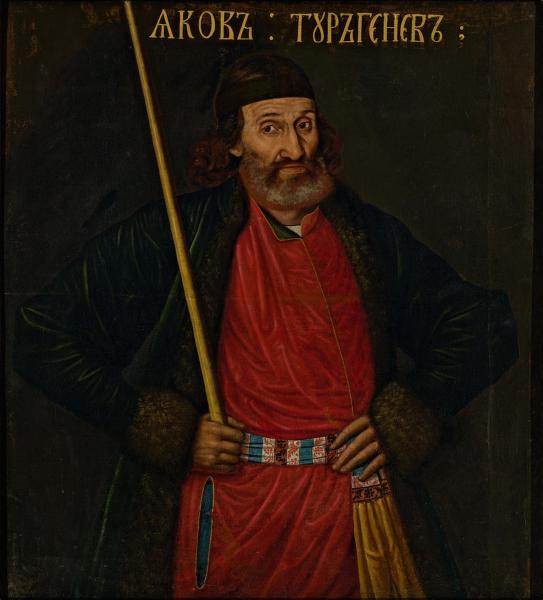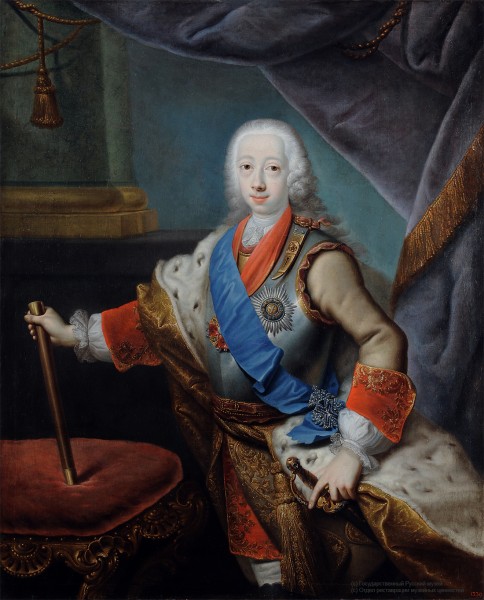The artist is unknown

Bukhvostov Sergey Leontyevich (1642 (59?) – 1728). “First Russian Soldier”, began service at the court of cooking. In 1683, the first was enrolled in the funny, later Preobrazhensky regiment. In 1695, in the rank of corporal, the Bombardier company was in the Azov campaign, for participation in the Northern War he was promoted to second lieutenant. After the siege of Stetin was wounded by the majority of the major to the St. Petersburg garrison artillery. Peter I. Time and environment. SPb, 2015. With. 124.
The portrait of the “first Russian soldier” Sergei Leontyevich Bhavostov was not mentioned in the inventory of the Preobrazhensky Palace of 1735, but he discovers an unconditional stylistic resemblance to eight main images of the series.
The portrait is dated on the basis of a gold medal attached to the buttonhole for the Prutsky campaign of 1711. The “first soldier” was remembered. There is evidence that in 1724 Peter ordered sculptor B.-To. Rastrelli his bust, and in 1728, the “St. Petersburg Vedomosti” was placed by his necrologist. Peter I. Time and environment. SPb, 2015. With. 107.
“Preobrazhenskaya series” – the rarest monument of early secular art in Russia. Her characters were traditionally called images of the jesters of Peter I. The name “Preobrazhenskaya series” was proposed. M. Moleva and e. M. Belyutin and arose in connection with the inventory of the Preobrazhensky Palace near Moscow, which included portraits (“persons”) Yakov Fedorovich Turgenev, Andrei Brownie, Matvey Filimonovich Naryshkin, as well as the “Picture of Alexei Lenin with Cloral”. The closest associates of Peter the Time “I began glorious affairs”, they were participants in the unique association. Documents drawn up by the king himself testify to what it was called “the most crazy crazy cathedral of the most all-food prince-papa”. Researchers unanimously attribute the beginning of “cathedrals” by the end of the 1680s-the beginning of the 1690s.
The basis of the series is eight portraits, the researchers supplemented it with a portrait of the “First Russian Soldier” by Sergey Leontyevich Bhavostov. However, apparently, the portraits were at least eleven, in the inventory of 1739 the “person of Prince Fedor Yuryevich Romodanovsky”, “Person of Nikita Moiseevich Zotov”, “Person of Ivanovich Buturlin”, “The character of the fool Timokhi”, whose location is unknown, were also included in the inventory of 1739.
It is believed that the series was created for the new palace, built in 1692 on the shore of Yauza near the soldiers’ courtyards of the Preobrazhensky regiment. Portraits were there, apparently until the last quarter of the 18th century, and when the palace was dilapidated, they were transported to St. Petersburg, stored in the meeting of the imperial Hermitage, and then were transferred to the Gatchinsky Palace.
In 1929, almost the entire “Preobrazhenskaya series” entered the Russian Museum, but two years later, portraits of the stolnik and. AND. Shchepothev and unknown in a brown fur coat are transferred from timing to the GTG.
The main one for the dating of all known portraits of the series is the following historical fact: images of bearded people (Turgenev, Naryshkin or Verigin) could be executed until August 26–30, 1698, when Peter returned from abroad began to cut his beards with his boyars who gathered for the meeting king in the same Preobrazhensky Palace. Thus, the dating of the series is the most likely-the 1690s (until 1698). Most researchers believe that the portraits of the series were written by Russian masters, painters of the arms chamber, whose services Peter used especially widely in the 1690s-early 1700s. N. X. Unknown artist. SPb, 2012. With. 23.


